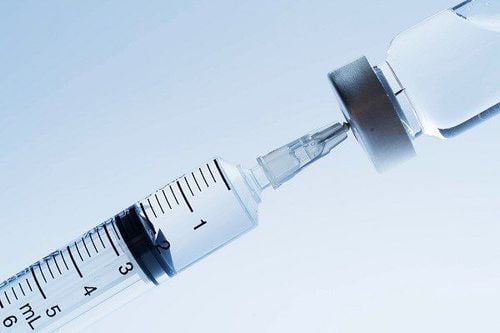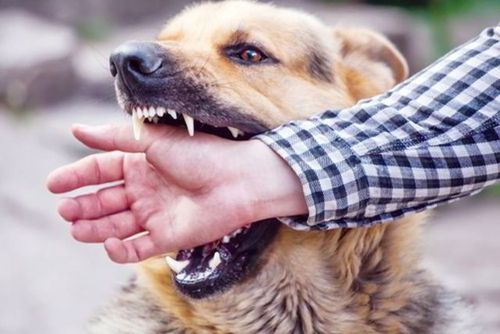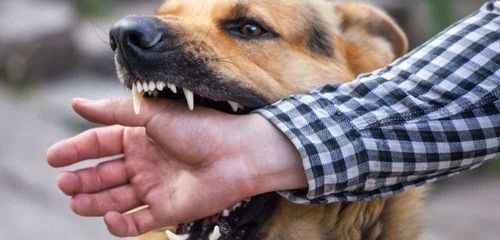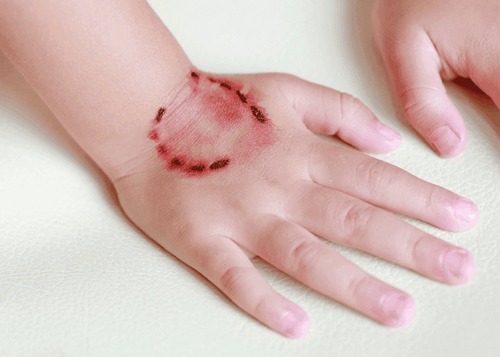This is an automatically translated article.
Rabies is a rare but very serious infection of the brain and nerves. The disease is usually caught from the bite or scratch of an infected animal, usually a dog.
1. Rabies development time
Symptoms of human rabies can occur rapidly during the first week after infection with the virus.
The early symptoms of rabies are very general and include weakness, fever, and headache. If there is no history of exposure to a rabid animal, these symptoms should not raise suspicion of rabies because they are very similar to the common flu or other viral syndromes.
2. How does rabies develop in humans?
After entering the human body, the rabies virus grows in the innermost layer of tissue beneath the human skin (called subcutaneous tissue), or from muscles, into peripheral nerves (i.e. nerves nerves in the body outside the brain or spinal cord).
The virus travels along nerves to the spinal cord and brain at an estimated rate of 12 - 24 mm per day.
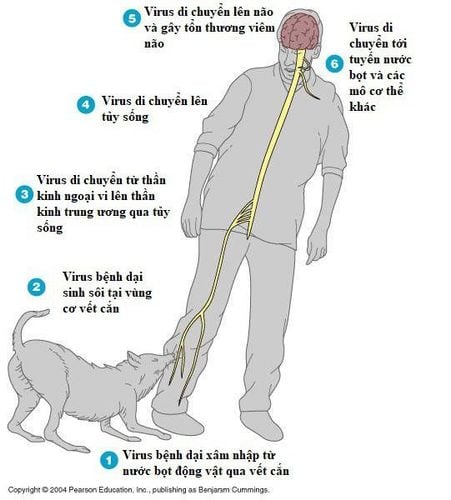
Virus di chuyển dọc theo dây thần kinh đến tủy sống và não
Infected people show behavioral changes and clinical signs when the virus enters the brain.
The incubation period ranges from a few days to several months, and can be as long as 1 year.
3. Can human rabies be cured?
There is no specific treatment when rabies develops. Almost nothing can be done other than keeping the patient comfortable, and free from physical pain and emotional discomfort.
Caregivers should take precautions to avoid bites and saliva contamination of mucous membranes and wounds by using personal protective equipment. Keep the patient in a quiet room with soft lighting and protect them from stimuli (eg, loud noises, cold air) that are likely to increase spasms and convulsions. Sedation with diazepam 10 mg every 4–6 h, supplemented by chlorpromazine 50–100 mg or intravenous morphine if necessary helps control muscle spasms and excitability. Oral feeding is usually not possible. The liquid should be given intravenously.
4. What to do when rabies is suspected?
4.1 Treating wounds after being bitten
Wounds should be washed and washed immediately with soap and water for 10–15 minutes. If soap is not available, flush. This is the most effective first aid job at risk of rabies. The wound should be thoroughly cleaned with 70% alcohol/ethanol or povidone-iodine (if available).
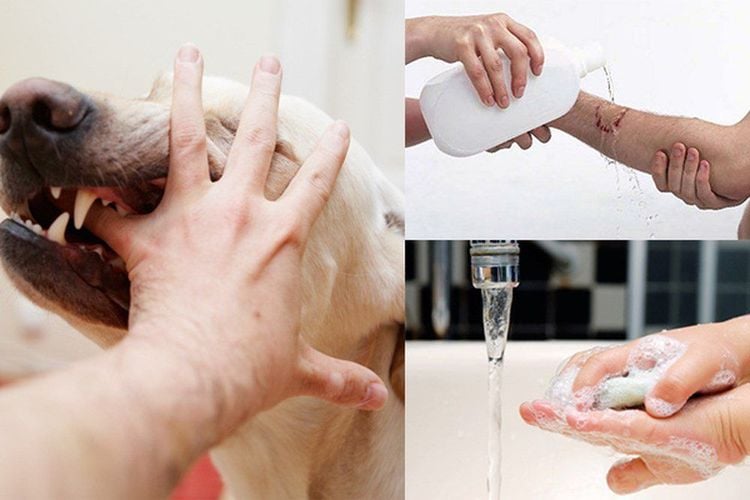
Vết thương cần được làm sạch hoàn toàn
As soon as possible, take the person to a healthcare facility for further treatment. What to avoid: Applying an irritant to the wound such as paprika, vegetable juice, acid or alkali. Cover the wound with gauze.
4.2 Monitoring the animal causing the injury
The incubation period for rabies ranges from a few days to several months, while the duration of illness - until death - varies from 1 to 7 days.
Canine rabies is characterized by changes from its normal behavior, such as:
Biting without any provocation Eating unusual objects such as sticks, nails, feces, etc. Running without have a clear purpose Sound changes e.g. hoarseness and growl or inability to make sounds Excessive salivation or foaming at the corners of the mouth - but not hydrophobia.
4.3 Monitoring signs of disease in the human body
This helps prepare the best preventive measures, common symptoms before the onset of the disease include:
Pain or itching at the site of the bite wound (in 80% of cases) Fever, discomfort , headache lasts for 2-4 days

Sốt, khó chịu, đau đầu kéo dài trong 2- 4 ngày là dấu hiệu của bệnh dại trên cơ thể người
Hydrophobia Intolerance to noise, light or air Fear of impending death Anger, irritability, and depression In later stages, only the spasmodic stimulus is seen in the neck and throat
4.4 Vaccination against rabies (PEP)
Post-exposure rabies prophylaxis (PEP) is required if you have been bitten by a dog, cat or other animal that has rabies or is suspected to have rabies. PEP is required under the following conditions:
If the bite has broken the skin and the wound is bleeding.
If mucous membranes come into contact with saliva from a suspected animal.
If animal has bitten someone:
Killed Disappears during observation Shows unusual, erratic behavior If laboratory test of brain material from suspected or rabid animal is positive. Vaccination of pets is the way to prevent rabies from being transmitted to humans. Pet families should vaccinate dogs at 6-8 weeks of age and vaccinate cats at 8 weeks of age or as directed by your veterinarian.
Please dial HOTLINE for more information or register for an appointment HERE. Download MyVinmec app to make appointments faster and to manage your bookings easily.




